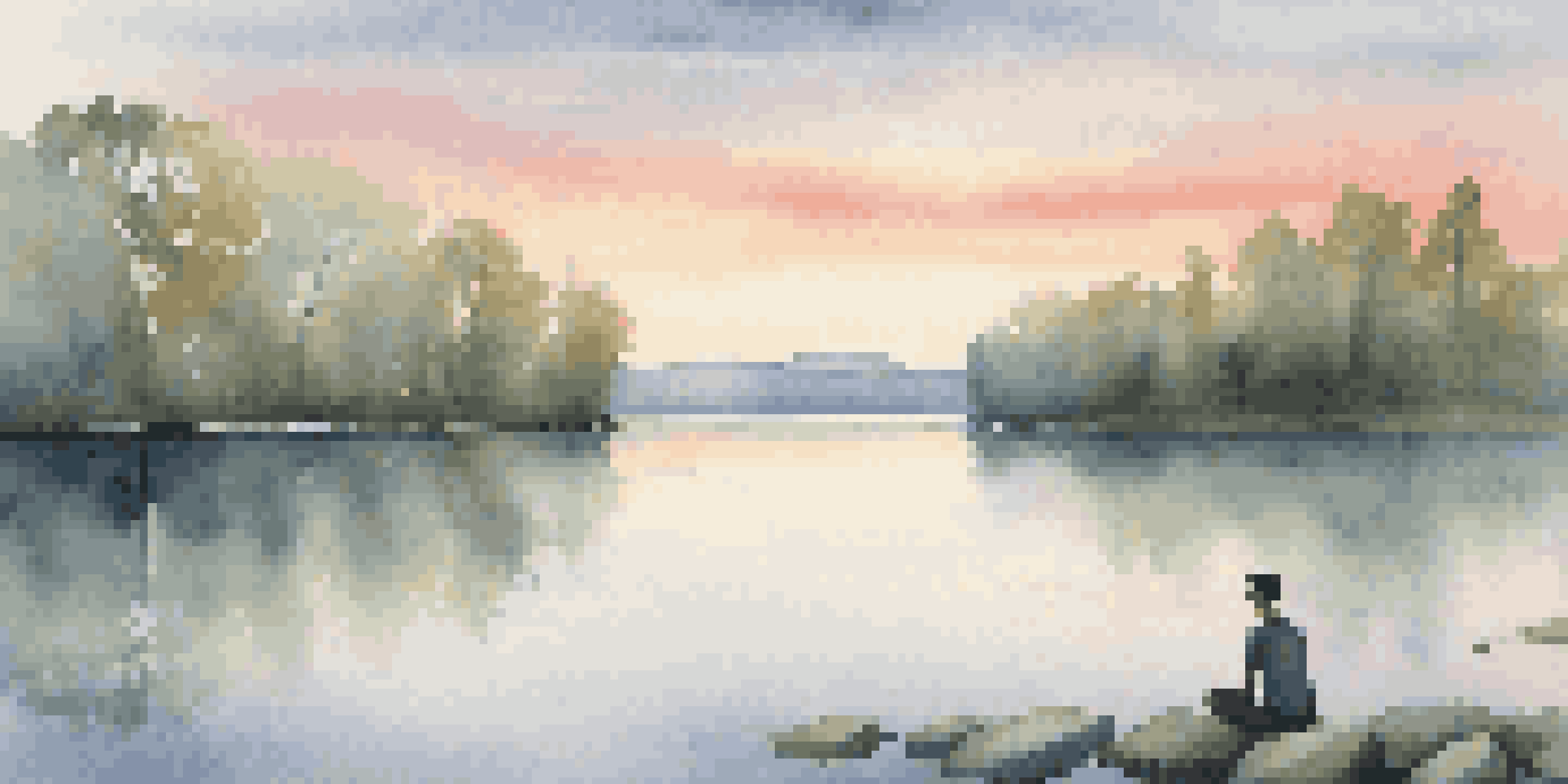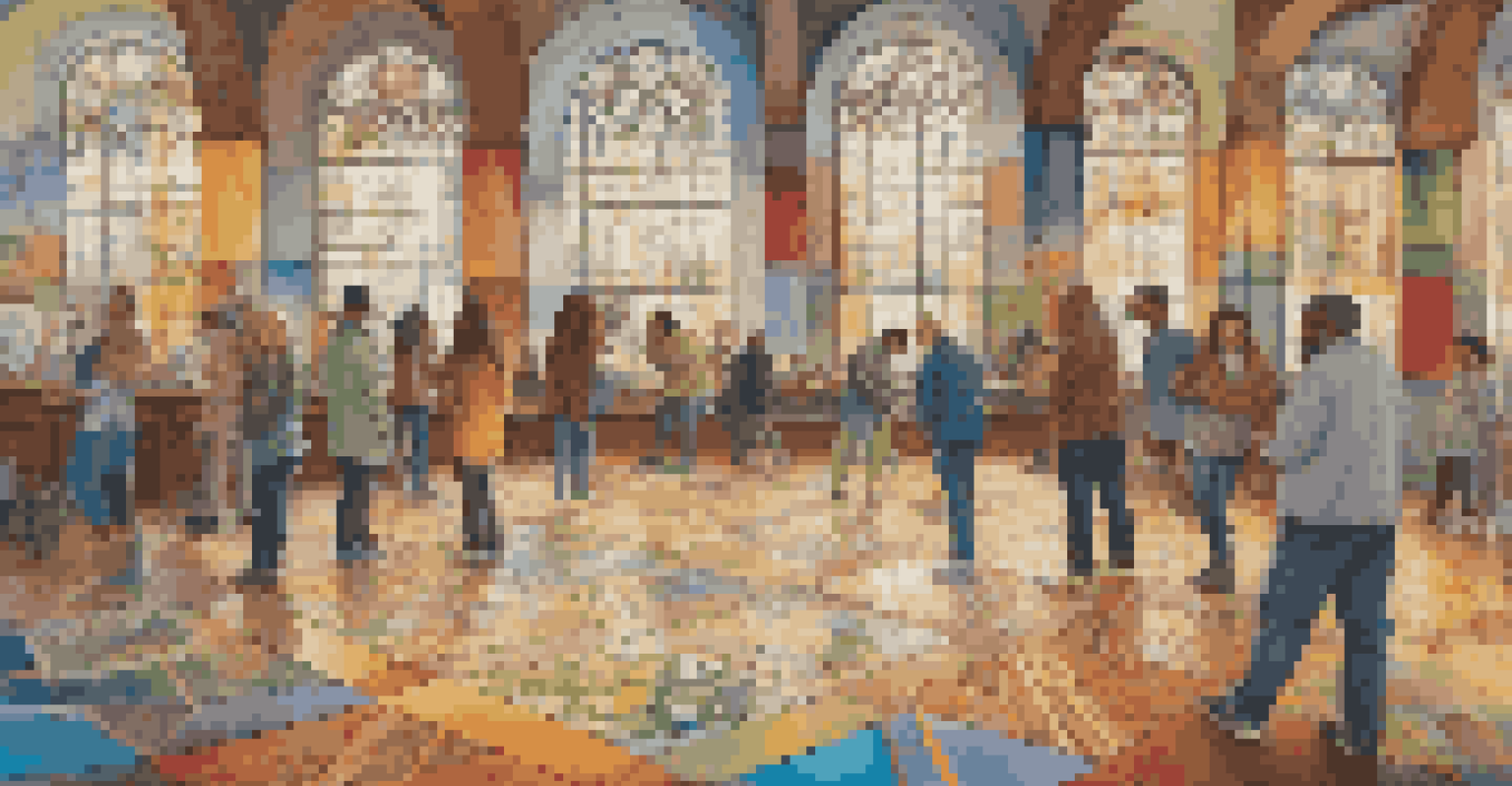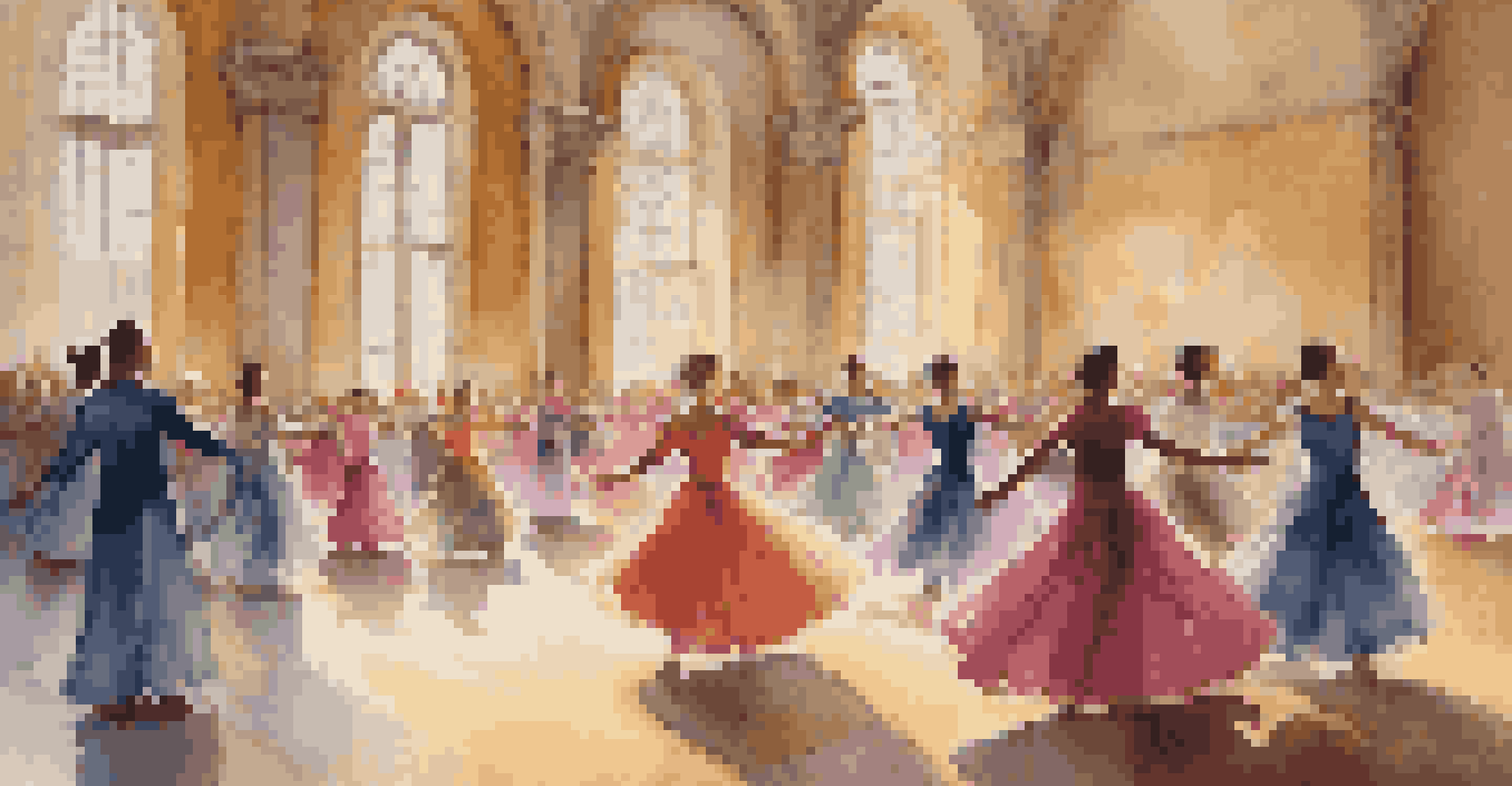The Role of Art in Religious Education and Spiritual Growth

Understanding Art as a Medium of Spiritual Expression
Art has long been a powerful medium for expressing spirituality and religious beliefs. From ancient cave paintings to modern installations, artists have used their craft to explore the divine and communicate complex spiritual concepts. This expression not only resonates with the creator but also invites viewers to engage with their own spirituality.
Art is the most beautiful of all lies.
For instance, consider how the intricate designs of Islamic art reflect a deep reverence for the divine. Each pattern and calligraphy serves a purpose, guiding the viewer into contemplation and connection with something greater than themselves. Such artistic expressions can spark conversations about faith and encourage introspection in educational settings.
Ultimately, art allows individuals to explore the nuances of their beliefs, making it an essential part of both religious education and personal spiritual journeys. By engaging with art, students can find a unique pathway to understanding and connecting with their faith.
The Role of Visual Art in Religious Education
Visual art plays a crucial role in religious education, as it can enhance understanding and retention of spiritual teachings. Paintings, sculptures, and stained glass windows often depict key narratives and figures from religious texts, making these stories more relatable and memorable. This visual engagement can help students grasp complex theological concepts more effectively.

For example, a depiction of the Good Samaritan can evoke empathy and inspire discussions around kindness and morality in a way that words alone might not achieve. Such imagery serves as a visual sermon, communicating messages of compassion and love that are central to many faith traditions.
Art Deepens Spiritual Understanding
Engaging with various forms of art allows individuals to explore and connect with their spirituality in meaningful ways.
Incorporating visual art into the curriculum encourages students to analyze and interpret these works, fostering critical thinking and personal connections to their faith. As they explore the meanings behind the art, they often find their own beliefs deepening.
Art as a Tool for Community Building in Religious Settings
Art has the remarkable ability to bring people together, fostering a sense of community within religious groups. Collaborative art projects, such as murals or group performances, can unite individuals around a common purpose and shared beliefs. This collective experience not only strengthens bonds but also enhances spiritual growth.
Music is the shorthand of emotion.
Take, for example, a church congregation coming together to create a mural depicting their community's values and history. This shared artistic endeavor can inspire conversations about faith, identity, and belonging, reinforcing their connection to one another and their beliefs.
Such projects also allow for diverse expressions of faith, as participants bring their unique perspectives and backgrounds into the artwork. This diversity enriches the community's spiritual life, making it more inclusive and vibrant.
Exploring Music's Influence on Spiritual Growth
Music is another powerful form of art that plays a vital role in religious education and spiritual growth. Hymns, chants, and contemporary worship songs can evoke deep emotions and create a sense of transcendence. Through music, individuals often find a unique way to express their devotion and connect with the divine.
For example, consider how a simple hymn can stir feelings of joy, nostalgia, or even sorrow, allowing congregants to experience a range of emotions in their spiritual journey. This emotional resonance can lead to personal reflections and a deeper understanding of one's faith.
Community Building Through Art
Collaborative art projects foster a sense of community and shared beliefs within religious groups.
Moreover, music can also serve as a communal experience, uniting individuals in worship. Singing together fosters a sense of belonging and shared purpose, enhancing both personal and communal spirituality.
Dance and Movement: Expressing Faith Through the Body
Dance and movement are often overlooked forms of art in religious contexts, yet they can be incredibly powerful for spiritual expression. Many cultures incorporate dance as a way to celebrate, worship, and connect with the divine. This physical expression can convey devotion in a way that words sometimes cannot.
For instance, liturgical dance in a worship service can visually represent the joy and reverence of the congregation. As dancers move in grace and rhythm, they embody the spirit of worship, inviting others to participate in the experience, whether through movement or reflection.
Furthermore, incorporating movement into religious education can help engage students on multiple levels, making lessons more dynamic and impactful. This holistic approach to learning can nurture both the mind and spirit, deepening their understanding of faith.
The Impact of Literary Arts in Religious Education
Literary arts, including poetry, storytelling, and religious texts, play a significant role in shaping spiritual understanding. Through written expression, individuals can explore profound themes of faith, morality, and existence. These narratives often serve as a foundation for religious teachings, allowing students to engage with complex ideas in relatable ways.
For instance, parables found in religious texts like the Bible or the Quran provide moral lessons through compelling stories. These narratives not only illustrate key teachings but also invite readers to reflect on their personal lives and beliefs, enhancing their spiritual growth.
Art as a Reflective Practice
Art encourages personal reflection and introspection, leading to deeper insights into one's faith and values.
Encouraging students to create their own literary works can also foster a deeper connection to their faith. By crafting poems or stories that resonate with their experiences, they have the opportunity to explore and articulate their spirituality in a meaningful way.
Art as a Reflective Practice for Spiritual Growth
Engaging with art can serve as a reflective practice that promotes spiritual growth. Whether through creating, observing, or discussing art, individuals can find moments of contemplation that deepen their understanding of their faith. This reflective process encourages personal exploration and self-discovery.
For example, taking time to meditate on a piece of art can prompt individuals to ask questions about their beliefs and experiences. This introspection can lead to insights that are pivotal for their spiritual journeys, helping them align their actions with their values.

Moreover, sharing these reflections in a group setting can foster community dialogue and support, allowing individuals to learn from one another's experiences. This shared exploration can enrich their spiritual lives and strengthen their connections to their faith and community.